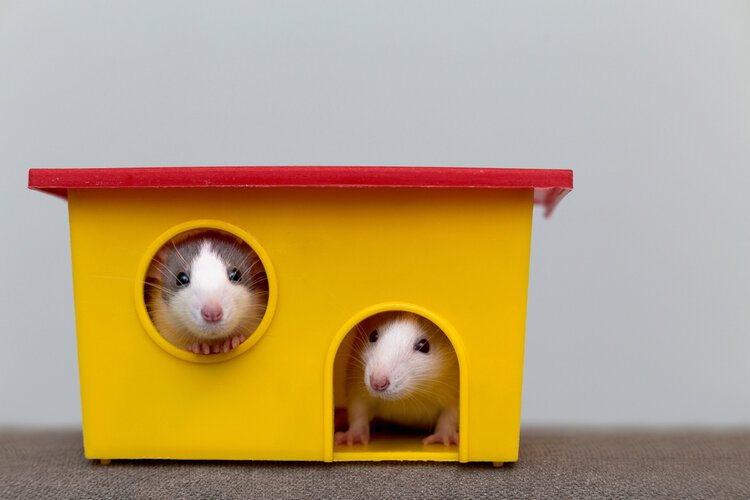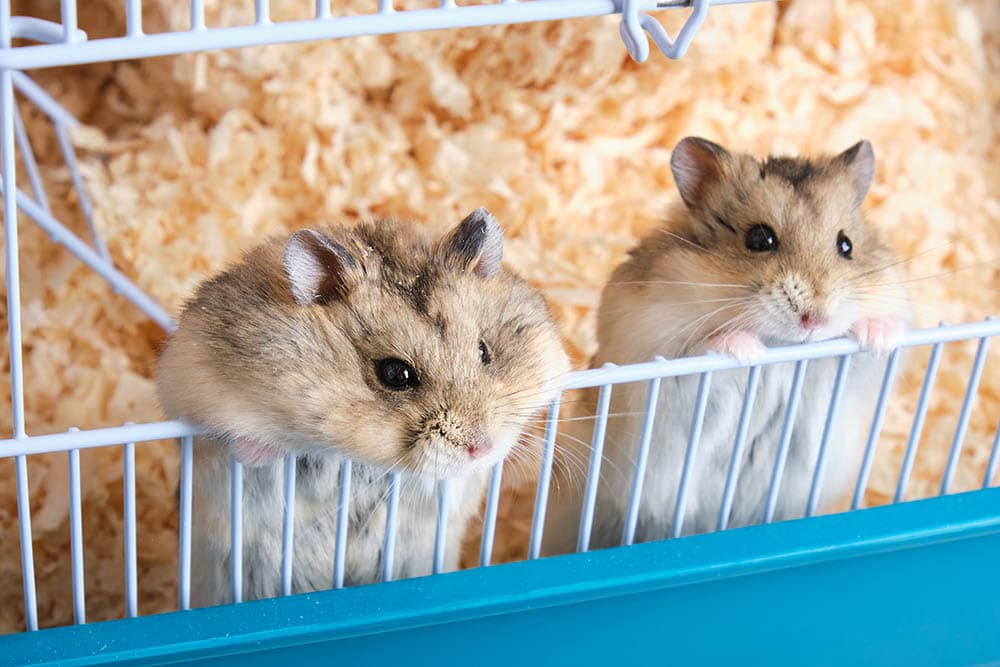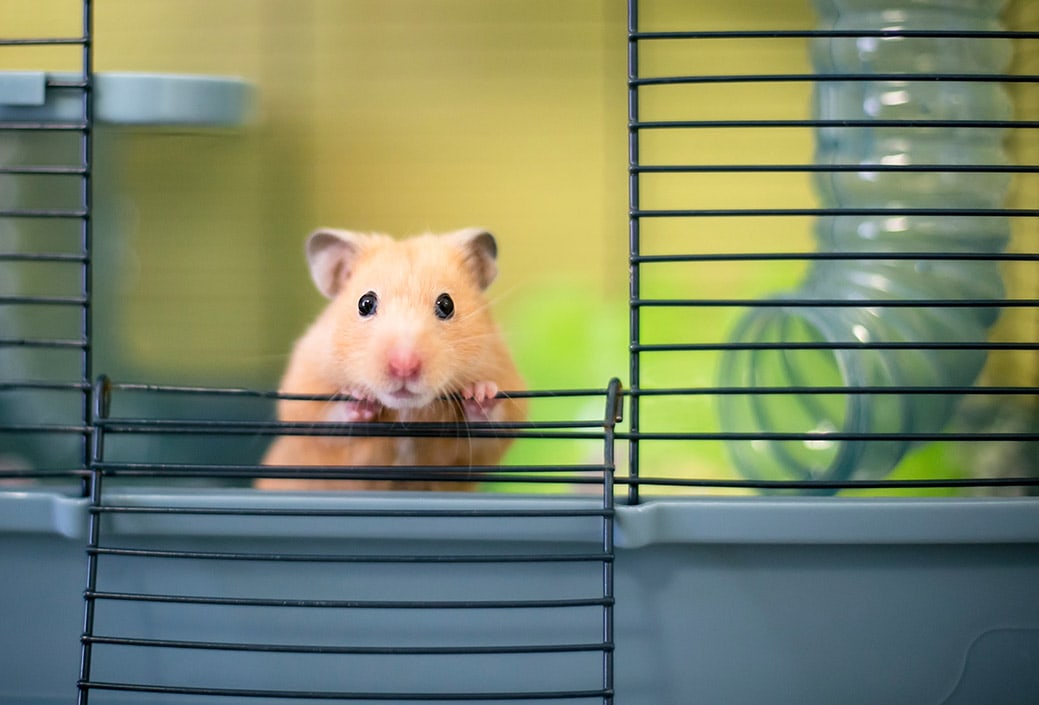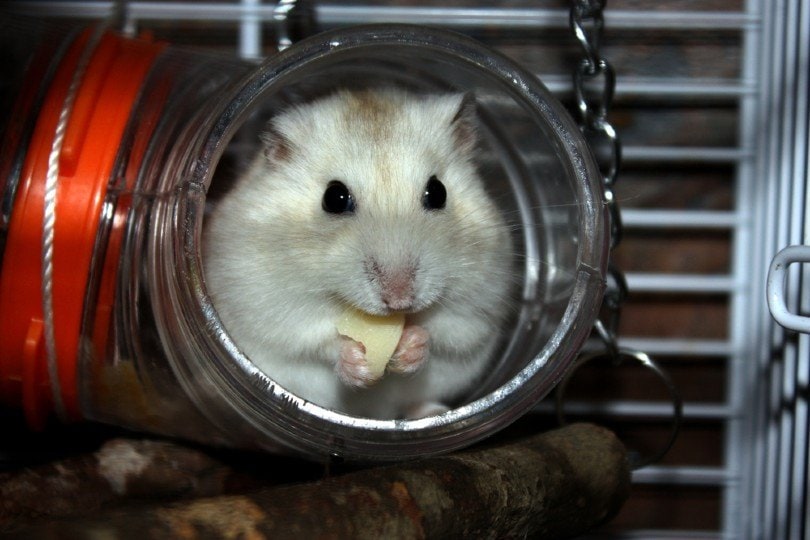
Hamsters are not known for having outstanding eyesight, but can they see in color? As nocturnal animals, hamsters’ retinas are optimized to see in the dark and have limited color vision. They are considered dichromates and can probably see the world in blue and green shades. Like other rodents, their eyes are better adapted to see in low light than to see vivid shades of colors.
Learn more about hamster vision, how well they see at night, and how they see the world compared to humans and other animals.
What Colors Can Hamsters See?
Based on a study conducted by Korean University in 2009, hamsters have similar vision to mice.1 The retina, at the back of the eyes, contains two types of photoreceptors: rods and cones. Rods are responsible for vision in low-light conditions, while cones are effective in bright conditions and are involved in color vision. It is thought that they can probably see the world in blue and green shades.2 Hamsters have 96.99% rods and 3.01% cones, which correlates with their nocturnal habits.
Diurnal animals have retinas with a larger number of cone photoreceptors, and nocturnal animals, like hamsters, have more rods to see better in darkness—like having night-vision goggles.
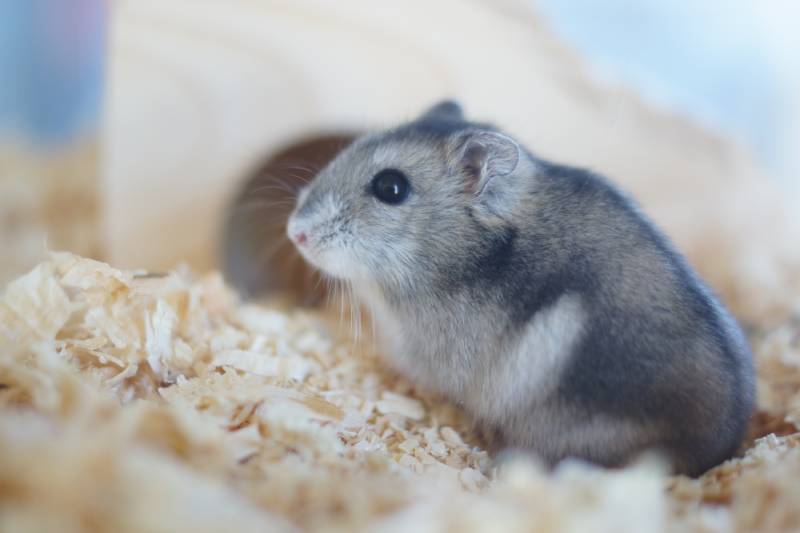
Does Light Bother Hamsters?
Hamsters don’t mind light, but they do best with natural light-dark cycles formed by the rising and setting of the sun. Artificial lights, such as the lights in your home, can disturb hamsters if they’re exposed to them throughout most of the night.
Like other nocturnal or crepuscular animals, hamsters thrive in low light. A bright light like sunlight or a spotlight can be blinding for a hamster, so you always want to give them a dark spot to hide and recharge.
Can Hamsters See in the Dark?
Hamsters are adapted to see in low light conditions, but that doesn’t mean they’re adapted to see in complete darkness. They still need dim light to interpret their surroundings. Unlike cats, hamsters do not possess a specialized night vision structure called tapetum lucidum. This thin layer located behind the retina acts like a mirror, allowing light to reach the photoreceptors twice, making the most of it.
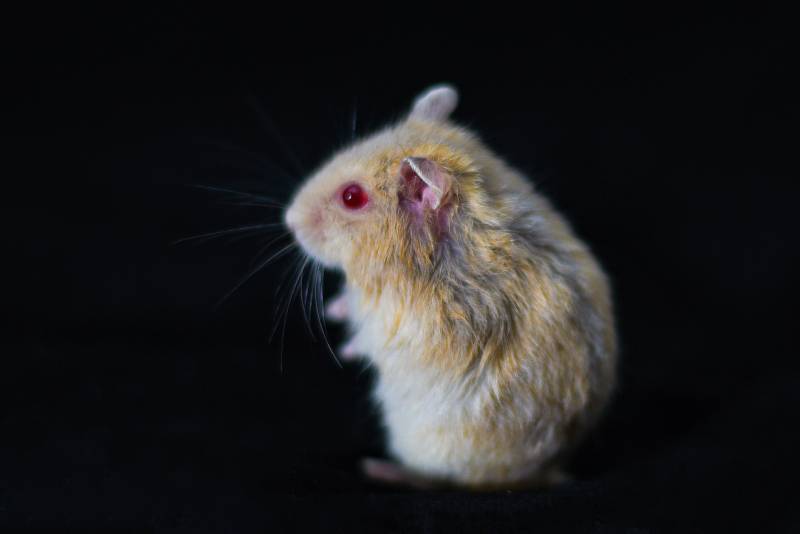
How Does Hamster Vision Compare to Human Vision?
There isn’t a lot of research into hamster vision, but a study conducted on the eyesight of mice showed that hamsters have retinas designed for night vision.3 Hamsters, unlike humans, do not have a fovea in their retina, this is an area of high density of cones which provides high-acuity vision. Instead, hamsters’ retina have a much higher density of rod photoreceptors and a minimal amount of cones throughout the retina.
Mice’s visual acuity is extremely low, equivalent to 20/2000 vision. The visual acuity of normal humans is 20/20. To put that in perspective, a hamster has to be approximately 100 times closer to an object to see it as sharply as we do. Their whiskers and smell play a very important role in helping them navigate the world apart from their eyesight.
When they’re born, hamsters have their eyes sealed tightly shut for the first 10 to 14 days. Once they open, hamsters never develop the sophisticated eyesight of some other animals, including humans.
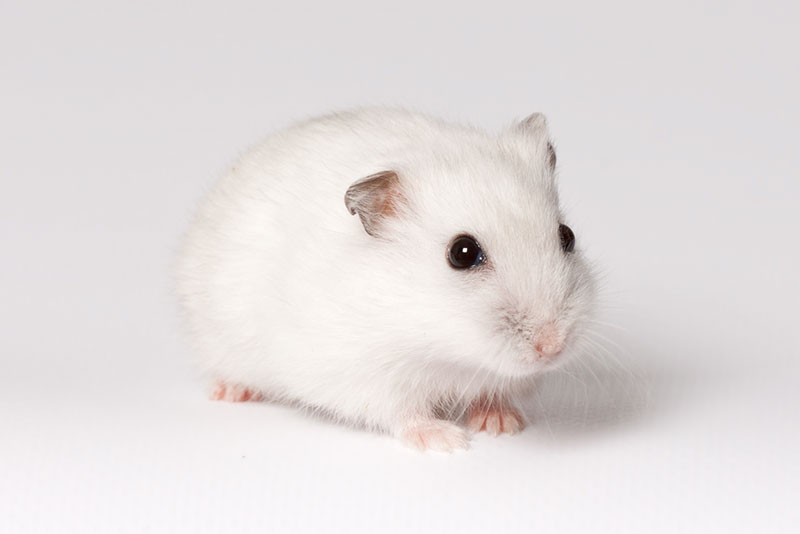
Conclusion
Hamsters don’t have the best vision and their color vision is not as rich as humans because they’ve adapted to see well in low-light conditions as nocturnal animals. Though they still can’t see in complete darkness, hamsters use their night vision, sense of smell, and sensitive whiskers to interpret the world around them.
Featured Image Credit: Marius Engen, Shutterstock



